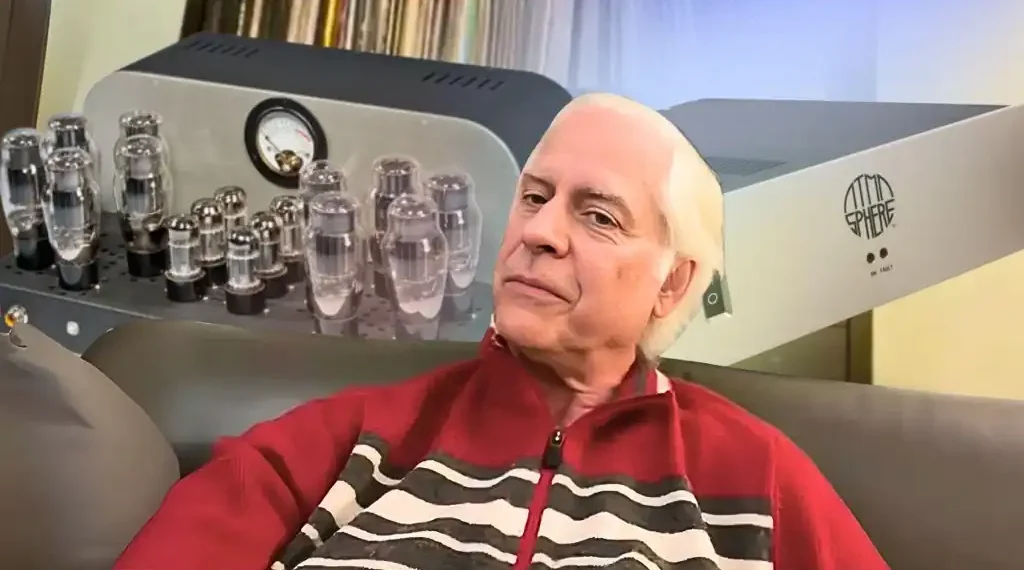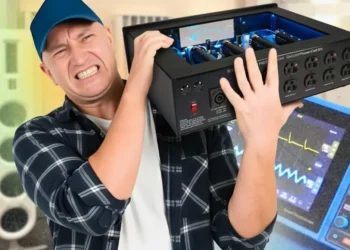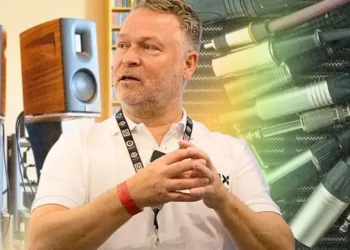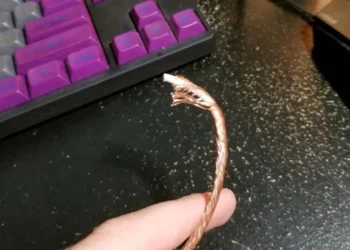Ralph Karsten Says the Era of Tube Amps Is Ending—and He Doesn’t Miss Them
Writing Time: August 08, 2025, 14:30 (U.S. Central Time)
Longtime Atma-Sphere designer embraces Class D technology for its superior efficiency, sound quality, and compatibility, signaling a major shift in high-end audio.
For decades, Ralph Karsten built his career around vacuum tube amplifier design. As the founder of Atma-Sphere, a high-end audio company known for its output transformerless (OTL) tube amps, Karsten’s name has become synonymous with refined analog sound. But in a recent public discussion, the audio engineering legend revealed a surprising shift: at home, he now listens through Class D amplifiers—and he doesn’t miss his tubes.
A Shocking Shift from a Tube Amp Icon
Karsten made the unexpected statement during a Zoom session hosted by Audiophile Junkie, following the annual Axpona high-end audio show. Speaking candidly, Karsten admitted that he now uses Class D amplifiers in his personal audio system—technology he once viewed skeptically.
“I’ll play these things all day and they’re cold to the touch, and I don’t miss the tube amps at all,” he said.
This wasn’t just a throwaway comment. Karsten spent over 40 years refining vacuum tube circuits, specifically OTL designs, which Atma-Sphere helped popularize in the high-end audio market. His departure from tubes, even at home, marks a significant moment in the evolution of amplifier design.
Karsten emphasized that this switch wasn’t driven by hype or trends, but by engineering logic and sonic performance.
“If you don’t figure Class D out at this point, you’re going to get left behind if you’re an amp manufacturer,” he warned.
How Karsten Embraced Class D Technology
Karsten’s interest in Class D amplification began just before the COVID-19 pandemic. At an Axpona show, his demo room was located next to a company showcasing Class D amps. Curious, he listened to familiar tracks and walked away impressed—and intrigued.
Back home, he started investigating Class D architecture with a singular goal: to match or exceed the performance of the tube amps Atma-Sphere was known for.
The Technical Journey to Lower Noise and Better Fidelity
Much of his effort was focused on reducing noise and interference in Class D circuits, a challenge due to the high-frequency switching involved. One critical advancement was his use of Gallium Nitride Field-Effect Transistors (GAN-FETs).
Unlike traditional components with wire leads, GAN-FETs eliminate parasitic inductance—minimizing the potential for signal degradation.
“GAN-FETs have no leads on them, so you can really control inductive parasitics on the board,” Karsten explained.
The result? A Class D amp that rivals—and in many cases, surpasses—tube amps in both distortion profile and noise floor.
Importantly, these new amps behave as steady voltage sources, making them more compatible with a broader range of speaker designs compared to traditional OTL tube amps.
Why Tube Amps Are on Borrowed Time
Karsten has not abandoned tube technology completely—Atma-Sphere still produces and supports tube-based products. However, he believes several converging trends are signaling the eventual decline of vacuum tube amplifiers.
1. Shrinking Vacuum Tube Supply
Karsten pointed out that sourcing quality power tubes has become increasingly difficult. Global supply chain disruptions and the ongoing war in Ukraine have further limited the availability of key tube models, especially those used in OTL amps.
“In 10 years, the vacuum tube marketplace is going to look very different,” Karsten predicted.
2. Guitar Amp Industry Is Moving Away from Tubes
While high-end audio is often credited with sustaining the tube market, Karsten clarified that musical instrument manufacturers, particularly those producing guitar and bass amplifiers, are the real driving force behind tube demand.
And that market is shifting quickly.
“Class D is invading the musical instrument market,” he said.
“Guitar amps and bass amps—they’re the major buyer of vacuum tubes, not high-end audio.”
As MI manufacturers pivot toward Class D for its lighter weight, lower heat, and higher reliability, the demand for tubes may fall below sustainable levels for continued manufacturing.
3. Class D Performance Is Now Superior in Many Cases
Joining Karsten on the Zoom call was Tom Schmidt, a Class D expert with engineering credentials from Texas Instruments and Cirrus Logic. Schmidt emphasized that modern Class D amps are now delivering sonic results that mirror, or exceed, the musical warmth of single-ended tube amps—without the downsides.
“It’s like a Class D amplifier is basically a single-ended tube amp when it comes to distortion,” Schmidt said.
“You don’t get the crossover distortion that comes with a Class A/B amp.”
Schmidt believes only a handful of ultra-premium tube amps—such as the $325,000 Wavac SH-833 with silver-wound transformers—can rival top-tier Class D systems. Even then, he argued, they’re no longer cost-competitive.
Both Karsten and Schmidt also stressed that a high-quality power supply is essential for Class D success. Many underperforming Class D designs fail not due to the amplification circuit itself, but because of inferior or poorly matched power supplies.
“A lot of the Class D designers don’t really understand how important it is to have a really good supply,” Karsten noted.
A Shift That Reflects a Larger Industry Trend
Karsten’s pivot reflects a broader reality: technology has caught up with tradition. Where tubes once offered a warmth and harmonic profile unmatched by solid-state alternatives, modern Class D designs—especially those incorporating GAN-FETs and well-engineered power supplies—are now meeting or exceeding those benchmarks.
His perspective adds weight to an ongoing conversation in audiophile and professional audio circles about what defines “good sound” in the 21st century.
Conclusion: End of an Era, Start of a New One
Ralph Karsten’s shift from tube to Class D amplification isn’t about abandoning legacy—it’s about embracing progress without compromise. His decades of tube amp expertise give credibility to his decision, and his technical innovations suggest that high-end audio is entering a new chapter.
While nostalgia for glowing tubes remains strong, the future may be cooler, quieter, more efficient—and Class D.
This article was rewritten by JournosNews.com based on verified reporting from trusted sources. The content has been independently reviewed, fact-checked, and edited for accuracy, neutrality, tone, and global readability in accordance with Google News and AdSense standards.
All opinions, quotes, or statements from contributors, experts, or sourced organizations do not necessarily reflect the views of JournosNews.com. JournosNews.com maintains full editorial independence from any external funders, sponsors, or organizations.
Stay informed with JournosNews.com — your trusted source for verified global reporting and in-depth analysis. Follow us on Google News, BlueSky, and X for real-time updates.












